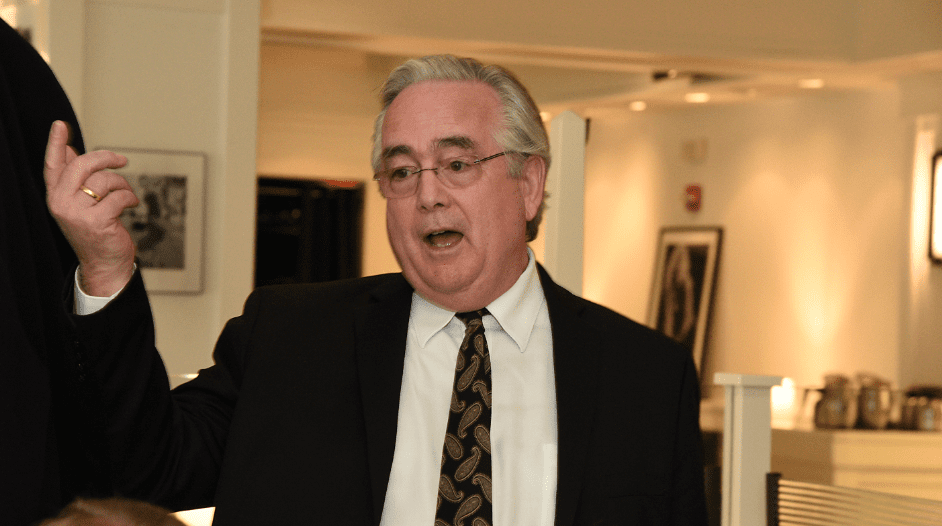Rasmussen Talks About AU’s Corcoran Collection
By • March 14, 2019 0 1193

Years ago, when the late Cyrus Katzen picked up his wife Myrtle after her art classes at American University, he would tell her: “This place is a dump.” And the Katzens did something about it — a big something.
Speaking at Georgetown Media Group’s March 7 Cultural Leadership Breakfast — held at 1310 Restaurant & Bar by Jenn Crovato, a new location for the series — AU Museum Director and Curator Jack Rasmussen contrasted the Katzen Arts Center, the museum’s home since 2005, with its former location: “Our present facility is 40 times the size.”
Closing at the Katzen on March 17 is “The Gifts of Tony Podesta,” an exhibition of contemporary sculptures and photographs originally given by Podesta to the Corcoran Gallery of Art, which ceased operations in 2014. George Washington University acquired the Corcoran’s historic building and the Corcoran College of Art + Design became GW’s Corcoran School of the Arts & Design.
As for the art collection, after the National Gallery of Art selected 7,000 works, other Washington entities were invited to submit proposals. Awarded 9,000 works, the most of any institution, the AU Museum more than doubled its holdings, creating the Corcoran Legacy Collection, on which the Podesta exhibition — curated by Klaus Ottmann and Jennifer Sakai — drew.
“We probably erred on the side of inclusivity,” said Rasmussen, who called the new Corcoran Collection “a really wild assortment of works.” In addition to paintings, drawings, prints and photographs, the museum acquired 900 objects, from ancient terracottas to a nylon piece with “all kinds of herbs in it … full of bugs.” He is now dealing with the challenges of cleaning, restoration and storage.
The AU Museum is Washington’s largest university facility for exhibiting art, with 24,000 square feet of space on three floors and a 6,000-square-foot sculpture garden. Starting this fall, the second floor will be devoted to work from the permanent collections, requiring a change in how it is lighted.
In his remarks, Rasmussen outlined the museum’s pre-Katzen Center history and ongoing philosophy. Its core holdings grew in the 1950s through the support of Duncan Phillips of the Phillips Collection, who donated works and suggested that works from the estate of Dada and Surrealist patron Katherine Dreier go to what was then called the Watkins Memorial Collection.
The museum’s three main areas of focus are international art, art that is socially and politically engaged and — now under the banner of the Alper Initiative for Washington Art — art created in the region. “We certainly show more Washington artists than anybody at any time,” said Rasmussen.
Work by women is also a focus, strengthened by the Corcoran acquisitions. He noted that AU is known for its feminist art history department.
Several exhibitions open simultaneously at the museum every few months. The spring opening reception will be held on Saturday, April 6, from 6 to 9 p.m. At a later point, there will be a show on how women, children and people of color were historically portrayed, “a kind of subversive look at the Corcoran Collection,” said Rasmussen, who teaches a class on curatorial practice. And in the fall of 2020, the museum, in a better position to be provocative than most institutional art venues in D.C., will host a show on queer fashion.

